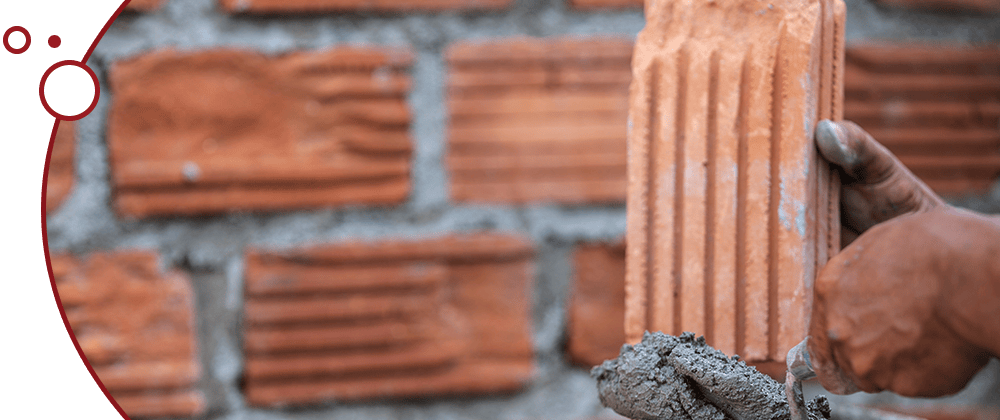
Brick spalling repair is a critical task for maintaining the structural integrity and aesthetics of brick buildings. This comprehensive guide delves into the causes, prevention, and repair techniques of brick spalling. Understanding and addressing this common issue can significantly extend the lifespan of brick structures, ensuring they remain safe and visually appealing. Our focus is to provide you with practical and effective solutions for brick spalling repair.
Table of Contents
What is Brick Spalling?
Brick spalling, a common issue in masonry, occurs when the surface of a brick deteriorates, leading to crumbling or flaking. This not only diminishes the aesthetic appeal but also compromises the structural integrity of the brickwork. Spalling typically results from moisture penetration into the brick, which expands upon freezing (freeze-thaw cycle), causing the brick to crack and eventually break apart.
Causes of Brick Spalling
- Moisture: The most significant factor in brick spalling. Water seeps into the porous brick, causing it to expand and contract, leading to deterioration.
- Temperature Fluctuations: Regions experiencing extreme temperature changes are more susceptible to spalling due to the freeze-thaw cycle.
- Poor Quality Bricks: Bricks with low density or poor composition are more likely to absorb water and spall.
- Chemical Damage: Certain chemicals, like salts used for de-icing, can penetrate the bricks and accelerate the spalling process.
Preventative Measures for Brick Spalling
- Choosing the Right Materials: Opt for high-quality, dense bricks and water-resistant mortar to reduce the risk of spalling.
- Effective Water Drainage: Implement good drainage systems around structures to prevent water from pooling near brick walls.
- Regular Maintenance: Regularly inspect brickwork for early signs of damage and address any issues immediately to prevent further deterioration.
Step-by-Step Guide to Brick Spalling Repair
- Assessing the Damage: Examine the brickwork to understand the extent of spalling. This will help in determining the scope of the repair work.
- Material Selection: Use materials that match the existing brickwork in terms of type, color, and texture for a seamless repair.
- The Repair Process:
- Remove Damaged Bricks: Carefully extract the spalled bricks without damaging the surrounding area.
- Clean and Prepare the Area: Clean the cavity, removing all debris to ensure a clean surface for the new brick.
- Replacement: Install new bricks and apply mortar, ensuring a tight and even fit.
- Curing and Sealing: Allow the mortar to cure completely before applying a sealant to protect the new brickwork from moisture.
Advanced Techniques in Brick Spalling Repair
- Tuckpointing: This technique involves removing old mortar and replacing it with new mortar, improving the structural stability and appearance of the brickwork.
- Chemical Treatments: Apply specific chemicals designed to penetrate the bricks and form a protective barrier against moisture and chemical damage.
The Role of Professional Assistance
- When to Call Experts: For extensive or structurally significant damage, it’s best to seek professional help to ensure a safe and effective repair.
- Choosing the Right Contractor: Look for experienced, licensed contractors with a good track record in brickwork repair. Check references and review their past work for assurance of quality.
Maintaining Your Repaired Brickwork
- Regular Inspections: Regularly inspect the repaired area and the rest of the brickwork to catch any early signs of new spalling.
- Effective Cleaning Practices: Use gentle cleaning methods that do not saturate the bricks with water or introduce harmful chemicals.
- Protective Measures: Consider applying waterproofing treatments and other protective measures to extend the lifespan of the brickwork and prevent future spalling.
Conclusion
In conclusion, brick spalling repair is indispensable for preserving the beauty and durability of brick structures. This guide has covered various aspects, including causes, prevention, repair methods, and maintenance tips. Implementing these strategies will not only fix existing damage but also prevent future occurrences, ensuring the longevity of your brickwork. Remember, timely action and proper maintenance are key to successful brick spalling repair.
FAQs on Brick Spalling Repair
Q: What are the early signs of brick spalling?
A: Early signs include chips or flakes on brick surfaces, cracks, and signs of moisture penetration.
Q: Can brick spalling lead to structural damage?
A: Yes, if left unaddressed, spalling can weaken the structure and lead to further deterioration.
Q: Is it possible to repair spalled bricks myself?
A: Minor spalling can be a DIY project, but extensive damage should be handled by professionals.
Q: How often should I inspect my brickwork for spalling?
A: Regular inspections, at least annually, are recommended to catch any early signs of damage.
Q: What is the best way to prevent brick spalling?
A: Using quality materials, ensuring effective drainage, and conducting regular maintenance are key.


